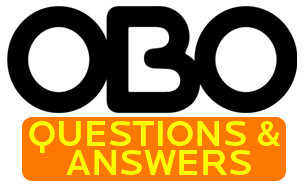I have two questions, both with are a result of recent experiences indoors (I’m a great believer in the positive value of Indoor keeping).
1. Some indoor surfaces are very tacky, making sliding almost impossible, (I can usually manage about a meter on these surfaces). Do you have any suggestions on situations where you want to attack, but can not make full use of a slide? (e.g. one on ones)
2. If I don’t charge a short corner for whatever reason a get in the "set" position. However I used to play in goal for a foot ball team and I can set myself too low. A number of times the ball hits the net and the words stand tall ring round my helmet; but I think there is a more fundamental problem with my technique. When a ball comes straight at me the simplest thing to do is stand tall and let it bounce off my chest plate. Instead, and this is where football comes in, I try to play the ball with stick and glove. In order to do this I shift my weight so that I fall back and then twist my torso to bring round my hands. I know I should not, but it only happens on the fastest shots that are at my shoulders, either side of the helmet, when it is a reflex action. Do you have any suggestions/drills that will help me with these shots/my technique?
 Question:
Question:
I have two questions, both with are a result of recent experiences indoors (I’m a great believer in the positive value of Indoor keeping).
1. Some indoor surfaces are very tacky, making sliding almost impossible, (I can usually manage about a meter on these surfaces). Do you have any suggestions on situations where you want to attack, but can not make full use of a slide? (e.g. one on ones)
2. If I don’t charge a short corner for whatever reason a get in the "set" position. However I used to play in goal for a foot ball team and I can set myself too low. A number of times the ball hits the net and the words stand tall ring round my helmet; but I think there is a more fundamental problem with my technique. When a ball comes straight at me the simplest thing to do is stand tall and let it bounce off my chest plate. Instead, and this is where football comes in, I try to play the ball with stick and glove. In order to do this I shift my weight so that I fall back and then twist my torso to bring round my hands. I know I should not, but it only happens on the fastest shots that are at my shoulders, either side of the helmet, when it is a reflex action. Do you have any suggestions/drills that will help me with these shots/my technique?
Answer:
In regards to your two questions, first about sliding on tacky, indoor surfaces. If you can generate a meter on a slide, that’s all you really need. The distance you slide isn’t as important as your position in the slide. The thing I find, when I slide on a sticky surface, is that my hip sticks and I almost end up rolling forward on my stomach. That prevents me from presenting as big a block when I slide. For that reason, the one thing I would suggest when sliding on a rubber floor is adjusting your slide so that your weight is slightly back, usually by keeping your top shoulder and hip slightly back. When you do plant and roll slightly forward, that will get you in a position where your hips and shoulders are perpendicular to the floor in your slide tackle position. The other thing about sliding, I need to be able to recover and get up after my slide tackle. That’s pretty difficult if I’m sliding two or three meters like you can on wood floors.
As far as indoor corners, I think the biggest thing you’re recognising is bigger is better. The closer you can get to the actual shot, the better your chances of getting hit with it. The problem that happens when most keepers slide, rather than going out and staying up, is that they don’t get close enough to the shot and a horizontal keeper two meters away from the shot isn’t much of an obstacle. If I’m charging on a corner, I don’t try to react to the ball if it’s going to hit me. I play with an ice hockey keeper’s body and arm pads and am very comfortable getting hit with shots straight at me, particularly the inside of my arms. That allows me a couple of things, one if I’m charging and the ball hits me in the upper body at the top of the circle, rebounds carry out of the circle. Second, the only thing I need to react to is shots wide of my body, which at that range might also be wide of the goal. I wouldn’t recommend falling backwards and trying to parry balls with your hands from close range unless you’re very good at it. It’s like swatting at flies, very hit or miss. Also, I don’t know how comfortable that makes the rest of your defence feel.
Finally, I don’t know that there are any drills per se, short of practising these situations. Work on forwards taking you on at the top of the circle. Do short corners ad nauseum. Repetition brings comfort and with comfort comes success.

